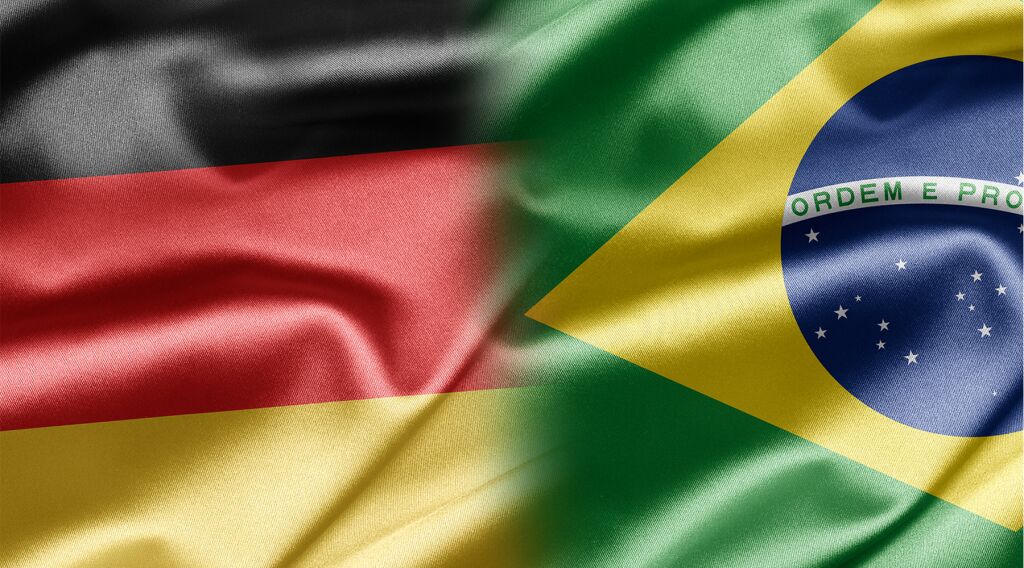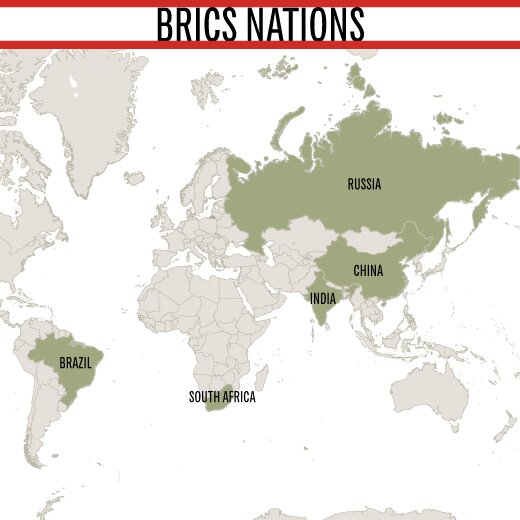
Germany Sees an Open Door in the Scramble For Latin American Resources
Many nations today are casting their gaze upon a land where natural resources are found in abundance, where raw materials are yet to be extracted, and where renewable energy resources haven’t reached their full potential. They recognize that Latin America could help them secure their own economic future.
For a time, China (and Russia, to a degree) seemed to have the advantage in trade relations with Latin America. But the Trumpet told readers not to expect that arrangement to last. “[B]e assured that Europe will not stand by passively and allow Beijing and Moscow to elbow it off the dance floor,” we wrote last year.
Now, the political landscape is changing in parts of Latin America, which may allow German to take a more commanding role in trans-Atlantic Latin American trade.
Brazil
Previously, Brazil was leaning steeply toward Asia. This was most evident in its membership in the Brazil, Russia, India, China and South Africa (brics) group, an association of the world’s prominent emerging economies, whose population includes approximately half of the world.
But there are indications that Brazil’s ongoing political and economic trouble may force brics to drop the ‘B’ and continue without its Latin American member. Last May, the German Institute for International and Security Affairs said, “Because of the interior political blockades, Brazil will be out until further notice as a significant global and regional player. … There are increasing signs that the political balance in the region is being redistributed. Germany and Europe should adjust in time” (Trumpet translation throughout).

Under the subtitle “Will the brics Consensus Break?”, the report said Brazil will have difficulties keeping its commitments to its brics partners and that the nation would be open for new negotiations with Europe.
Meanwhile, countries in the South American trade bloc Mercosur (Brazil, Argentina, Uruguay, Venezuela and Paraguay) have begun working toward a free-trade agreement with the European Union. Lincoln Bizzozero, program coordinator of International Studies at Uruguay’s University of the Republic, said that due to Latin America’s economic setbacks, the Mercosur countries will be more likely to give in to European demands and strike a deal.
Argentina
Last year, there was little indication that Argentina would decrease its cooperation with China. On March 2, 2015, then President Cristina Fernández de Kirchner said:
Who could have thought that an American president was to send to Congress a bill with the lifting of the blockade on Cuba. The world will be different in five years’ time, and in five years, China will become the world’s most important economic actor. …
How can we leave out 1.353 million people, the first actor in world economics, which has a permanent seat in the UN Security Council?
Though Argentine-Chinese ties remain robust, German trade and influence could be primed for growth. In June, Argentine President Mauricio Marci told German Foreign Minister Frank-Walter Steinmeier that Germany would be one of Argentina’s most important trade partners. Steinmeier then encouraged Argentina’s new course of reform. A second meeting between the two is planned for next month when Marci travels to Berlin. Marci also says he is open to new negotiations between Mercosur nations and Europe, and he is putting a greater emphasis on renewable energies, which opens another door for Berlin.
Mexico, Chile, Colombia and Peru
Smaller Latin American nations appear eager to follow suit. Konrad-Adenauer-Stiftung, a political foundation associated with Germany’s Christian Democratic Union party, wrote on June 15:
More and more governments in Latin America, like in Mexico, Chile or Colombia, support a course of economic liberalism. A continuation of this trend is seen in the recently elected President Pablo Kuczynski in Peru. The economic political consequences now spread, especially over the formerly tightly closed energy markets, which now open and modernize step by step.
Mexico and Germany are already boosting their cooperation. When Mexican President Enrique Peña Nieto visited Berlin in April, he said, “Germany, under Chancellor Angela Merkel, is an important political player in Europe and in the world.” Germany and Mexico’s cooperation involves fighting organized crime in Mexico, establishing cooperative economic deals, and modeling Mexico’s vocational education training program after Germany’s.
Latin America and Europe—a Troubling History
The October 1957 issue of the Plain Truth magazine explained one reason why the nations of Europe and Latin America are likely to cooperate with one another: “During World War ii, Argentina was an outspoken friend of [Adolf] Hitler, sheltering Nazi officers and men, offering safe haven for Nazi ships and submarines. Many Nazis found their way to Argentina and safety while Hitler’s regime was collapsing under the steady rain of Allied bombs.”
In the years after World War ii, former Argentine President Juan Perón said he was proud that his nation had absorbed these highly educated Germans. He was certain they would hasten the development of Argentina. “The German government has invested millions of marks into the development of these people; we only paid for the airplane ticket,” he said.
Hundreds of Nazi leaders fled Europe with the support of the Vatican through the “ratlines.” Many settled in Argentina and other Latin American countries, receiving support from the local governments and the Catholic Church. They became educators and business owners, and they shaped the political and economic landscape of the country.
Under the direction of Herbert W. Armstrong, the Plain Truth gave a strong warning in April 1966:
Can you see why we warn readers that the Latin American Common Market and the Central American Common Market are dangerously close to becoming partners with the European Common Market? Can you see these giant combines are dangerously close to turning their backs on America and Britain, once and for all?
At present, the United States remains Latin America’s number-one trade partner. But the political changes underway in the region are opening the door for major shifts to occur. To understand more about this ongoing trend and how Mr. Armstrong anticipated it, read “Europe’s Inroads Into Latin America” from our free booklet He Was Right.
